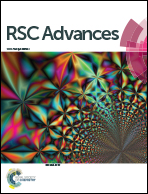Modification with boehmite-derived alumina nanoparticles enhances mechanical properties of resin
Abstract
Nanostructured γ-Al2O3 with an average particle size of 90 nm was synthesized by coated silica in solution. As a type of hard template, the coated silica shell layer could decrease the sinter of alumina particles during the phase transition process at 550 °C. The average particle size of γ-Al2O3 is significantly affected by boehmite concentration, amount of sodium silicate, and layers of silica. The mechanical properties of waterborne acrylic resin were enhanced significantly after the addition of γ-Al2O3 nanoparticles with dispersant (SK-5040). For solvent-based polyurethane resin, the surface of γ-Al2O3 nanoparticles needed to be modified by stearic acid to achieve proper dispersion and stability. For comparison, the effect of different fillers (including ZnO, TiO2 and SiO2) was also tested under the same conditions.


 Please wait while we load your content...
Please wait while we load your content...